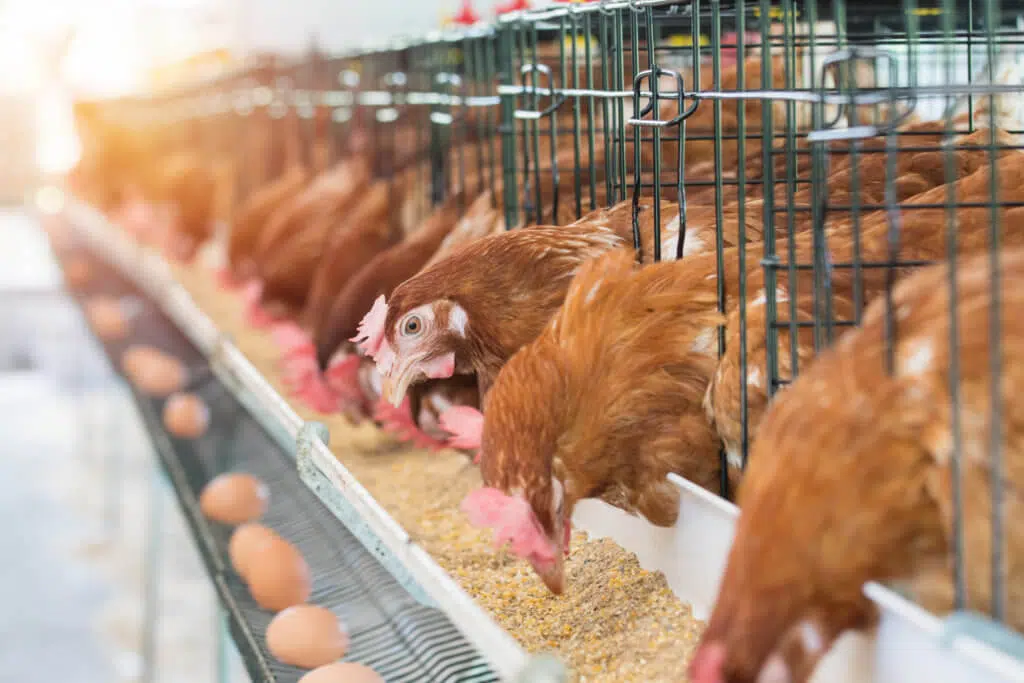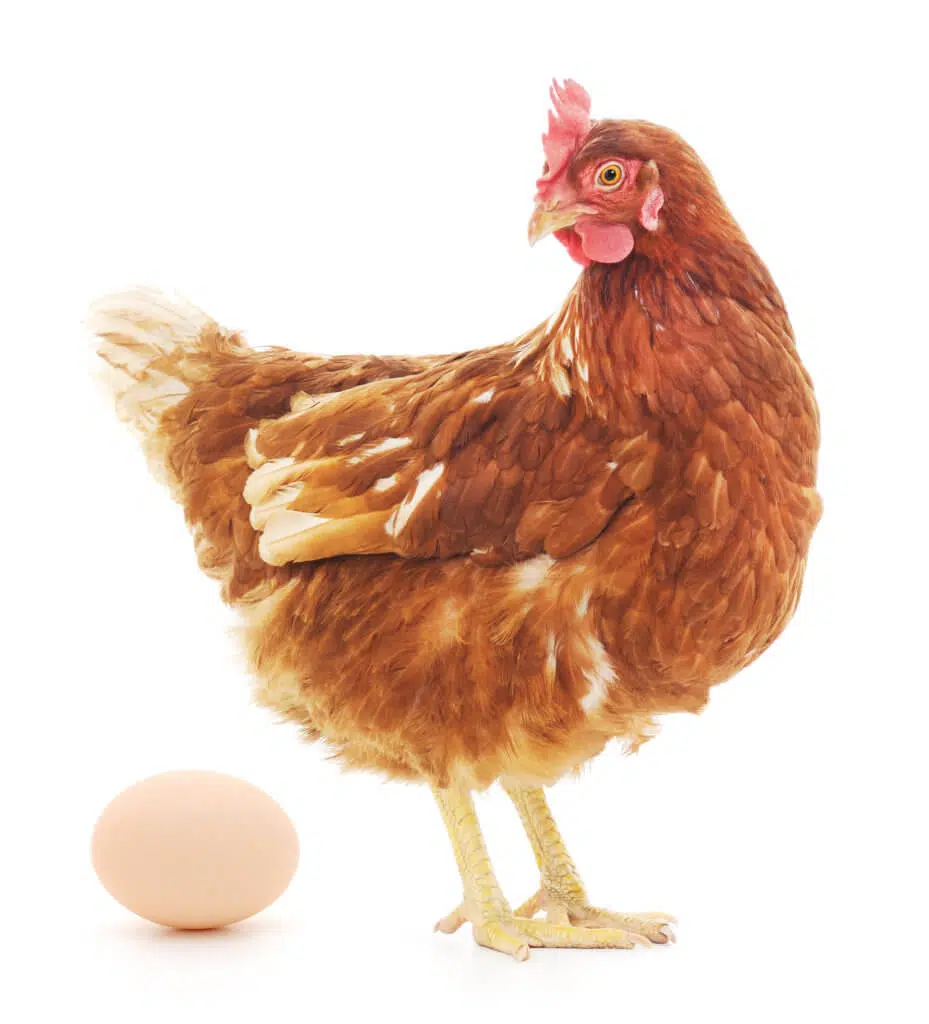Abstract
Blood ionised calcium (iCa) is an indication of the calcium (Ca) that is physiologically active and available for the hen to utilise for bone remodeling and eggshell formation. A study was conducted to determine the effects of limestone particle size and phytase added to diets, on changes in blood iCa following oviposition (OP). Amberlink hens (64) at 31 weeks of age were used. The hens were fed four treatments in a 2×2 factorial design containing two particle sizes of limestone, grit (1,5 mm geometric mean diameter, GMD) or fine (0,2 mm GMD) and two levels of added phytase from Buttiauxella spp. (0 FTU/kg or 600 FTU/kg). Each hen had the exact time of OP recorded and for the same hen, blood collection commenced within five minutes of OP, and in three-hourly intervals for 24 h following OP. Blood iCa and pH were measured using an i-STAT point-of-care laboratory system. Blood iCa and pH of hens changed (P<0,05) over the 24 h period and were not affected by phytase. An interaction (P<0,05) of limestone particle size and time was observed, with hens fed limestone grit having higher blood iCa from 12 to 24 hours post-OP. This suggests that limestone grit in layer feed increases iCa during the time the next egg is in the shell gland.
Introduction
Over the past few decades, commercial laying hens have been selected for higher egg production and greater persistency. The extended persistency of production has also resulted in hens being kept for extended production cycles past 80 weeks of age. An unintended consequence of the lower body weight, higher egg output, and longer production cycles of modern hens has been a higher observed incidence of osteoporosis and bone breakages in late production, as well as a decrease in saleable eggs due to egg breakages. These problems pose challenges to both animal welfare and the profitability of commercial egg production systems. Understanding the calcium (Ca) supply to the hen is key to overcoming these challenges.
The laying hen has two major phases of Ca redistribution in a 24 h cycle. Initially there is a demand for medullary bone to be remineralised in the first five hours after ovulation, and during the later phase of the day there is a large demand for Ca as the eggshell is being calcified in the oviduct. The changes in iCa that are required to support these processes are regulated by altering Ca retention in the kidney and absorption of dietary Ca from the gastrointestinal tract (GIT).
Limestone provides more than 95% of the dietary Ca provided to the hen. It has been well established that the particle size of limestone provided to hens can alter limestone solubility,and impact egg shell quality. Further, exogenous phytase enzymes are added to commercial laying hen diets to increase digestibility of phytate-bound phosphorus (P), with observed benefits to increasing Ca digestibility due to reduced Ca–phytate complex formation. What is not known, is how limestone particle size or phytase enzymes potentially alter iCa over the daily cycle of egg production.
To assess this, we conducted a study to investigate the iCa pattern in the blood over 24 h post-oviposition (OP) and if limestone particle size or phytase enzymes changed these patterns.
Material and methods
Amberlink hens (n=64) at 31 weeks of age were used. A basal diet was mixed to contain no limestone or inorganic P (1,14 g/kg Ca and 3,6 g/kg P). The basal diet was then used to mix four dietary treatments (T1–T4) in a 2×2 factorial design containing two particle sizes of limestone, grit (1,5 mm geometric mean diameter, or GMD), or fine (0,2 mm GMD) and two levels of added phytase from Buttiauxella spp. (0 FTU/kg or 600 FTU/kg). Limestone was analysed for Ca and 35,8 g/kg Ca from limestone added to each basal diet. Each hen received a meal of 130 g of feed each day and the exact time of OP recorded for individual hens. For the same hen, blood collection commenced within five minutes of OP, and continued at three-hourly intervals for 24 h following OP. Blood iCa and pH were measured using an i-STAT point-of-care laboratory system. Blood was drawn with a 30 G insulin needle to reduce vein damage and haematoma formation. Collected blood was immediately analysed to reduce variation that could influence the iCa results. Hens that had blood drawn were observed for egg production the following day and only hens that produced an egg were included in the final dataset. The effects of limestone particle size, phytase, time post-OP, and their interactions on the various blood parameters were tested by SAS MIXED model using repeated measures. Individual hens were treated as random effect and pre-trial average daily feed intake and body weight were included in the model as covariates.

Results and discussion
Blood pH and iCa of hens changed significantly over the 24 h period and were not affected by phytase. To our knowledge, although several studies have investigated effects of phytase on ileal Ca digestibility in laying hens, no previous studies have reported effects of phytase on iCa.
Blood iCa levels over time, and as affected by limestone particle size are shown in Figure 1. There was a significant main effect of time, and a significant interaction of time and limestone particle size on blood iCa. All hens had elevated circulating iCa levels for the first six hours after OP, after which iCa decreased (7–21 hours). The decrease in blood iCa after seven hours post-OP was likely caused by the increasing demand of iCa for eggshell calcification during this period when the egg for the following oviposition is in the shell gland. The sharp reduction in iCa indicates that the demand of Ca for shell calcification was greater than what could be provided from the blood and resulted in the rapid decrease in ionised blood Ca from 1,67 mmol/L to 1,36 mmol/L. Hens that received limestone grit had numerically higher iCa from 12–21 h post-OP compared to hens that received fine limestone. These data show that limestone grit in layer feed can contribute to a greater supply of Ca to the bird during the eggshell deposition period. The improved supply of Ca and higher iCa are likely due to the slower rate of limestone solubilisation from the grit that supported a supply of dietary Ca during this period.
While in the present study, we did not measure iCa at the following oviposition, other research shown that during the last three hours before the following oviposition, there was a rapid increase in blood iCa to a similar same level as time 0. During the last three hours prior to OP, calcification of the eggshell declines rapidly. This no longer imparts a drain on ionised blood Ca levels that, together with homeostatic mechanisms, allow the blood iCa levels rapidly to pre-eggshell calcification iCa levels.

Conclusion
The supplementation of limestone grit in layer feed maintained numerically higher blood iCa level after 12 h post-oviposition. This may be beneficial in limiting the amount of bone being demineralised during eggshell formation. Phytase inclusion in the diets had no effect on blood iCa levels.
References
- Bain, M.M., Nys, Y., Dunn, I.C., 2016. Increasing persistency in lay and stabilising egg quality in longer laying cycles. What are the challenges? British Poultry Science 57(3): 330–338.
- Bar, A., Vax, E., Striem, S., 1999. Relationships among age, eggshell thickness and vitamin D metabolism and its expression in the laying hen. Comparative Biochemistry and Physiology Part A: Molecular & Integrative Physiology 123(2): 147–154.
- Jalal, M.A., Scheideler, S.E., 2001. Effect of supplementation of two different sources of phytase on egg production parameters in laying hens and nutrient digestibility. Poultry Science 80: 1463–1471.
- Kerschnitzki, M., Zander, T., Zaslansky, P., Fratzl, P., Shahar, R., Wagermaier, W., 2014. Rapid alterations of avian medullary bone material during the daily egg-laying cycle. Bone: 69, 109–117.
- Luck, M.R., Scanes, C.G., 1979. Plasma levels of ionized calcium in the laying hen (Gallus domesticus). Comparative Biochemistry and Physiology Part A: olecular & Integrative Physiology 63(1): 177–181.
- Molnar, A., Maertens, L., Ampe, B., Buyse, J., Zoons, J., & Delezie, E., 2017. Supplementation of fine and coarse limestone in different ratios in a split feeding system: Effects on performance, egg quality, and bone strength in old laying hens. Poultry Science 96(6): 1659–1671.
- Nys, Y., Le Roy, N., 2018. Calcium Homeostasis and Eggshell Biomineralization in Female Chicken. Vitamin D, Volume 1: Biochemistry, Physiology and Diagnostics. 4th Edition. Ed: David Feldman. Elsevier Inc.
- Parsons, A.H., Combs, G.F., 1980. Blood Ionized Calcium Cycles in the Chicken. Poultry Science 60: 1520–1524.
- Rodriguez-Navarro, A., Kalin, O., Nys, Y., Garcia-Ruiz, J.M., 2002. Influence of the microstructure on the shell strength of eggs laid by hens of different ages. British Poultry Science 43(3): 395–403.
- Singh, R., Joyner, C.J., Peddie, M.J., Taylor, T. G.,1986. Changes in the concentrations of parathyroid hormone and ionic calcium in the plasma of laying hens during the egg cycle in relation to dietary deficiencies of calcium and vitamin D. General and Comparative Endocrinology 61: 20–28.
- Van de Velde, J.P., Loveridge, N., Vermeiden, J.P.W., 1984. Parathyroid hormone responses to calcium stress during eggshell calcification. Endocrinology 115(5): 1901–1904.
- Whitehead, C.C., Fleming, R.H., 2000. Osteoporosis in cage layers. Poultry Science 79(7): 1033–1041.
- Zhang, B., Coon, C.N., 1997. The Relationship of Calcium Intake, Source, Size, Solubility In Vitro and In Vivo, and Gizzard Limestone Retention in Laying Hens. Poultry Science 76(12): 1702–1706.
Intern: Poultry











Good morning Micaela
Thanks for this.
We have found similar results in the field with the physical egg quality but also found that grit between 1 – 2 mm moves out of the GIT to quickly.
Using grit over 2 mm gave us an even better response.
Regards
Dr Scott Elliott